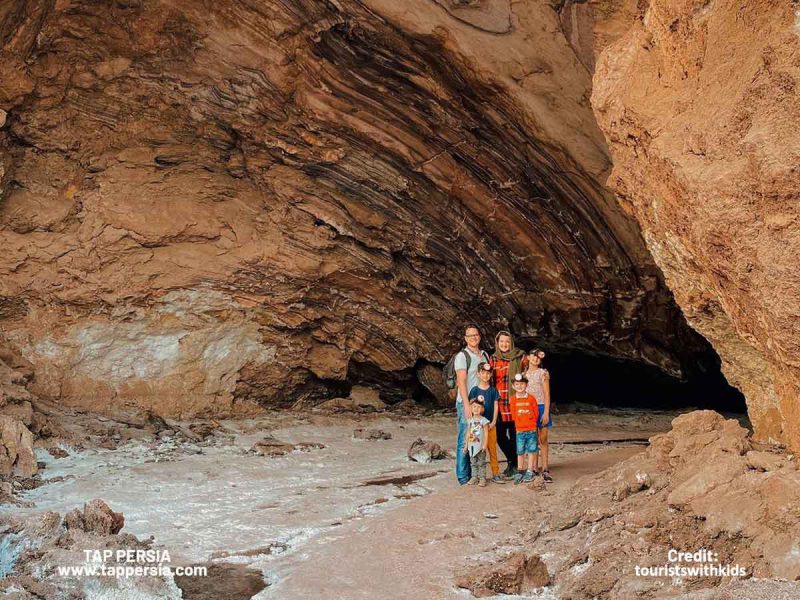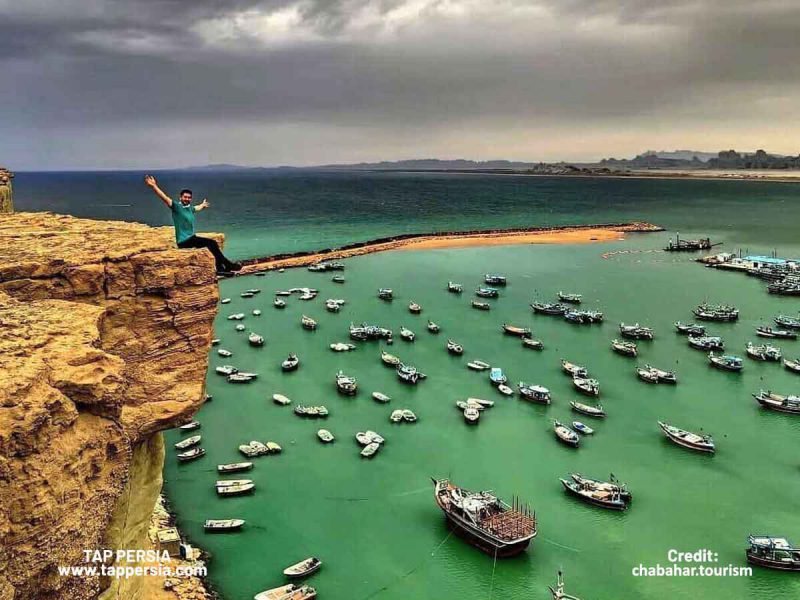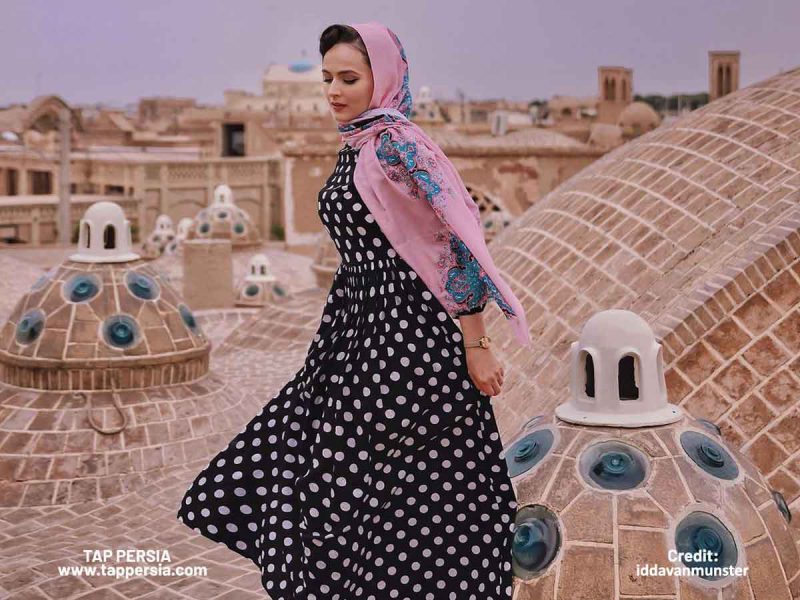The phrase “Isfahan nesf-e Jahan” means “Isfahan is half of the world” and is well known in Iran. This well-known and historic city in Iran’s middle has served as the country’s capital on several occasions throughout history, so it has a wealth of distinctive tourist attractions to offer. Here is a detailed list of all the things to do in Isfahan.
Explore the Islamic Architecture of Isfahan
Isfahan is famous for its magnificent Islamic and historical buildings that take the breath away from every visitor, whether local or foreign. Here are a few examples of Isfahan’s Islamic constructions so you may learn more about them:
1.Visit the Naqsh-e Jahan Square and its historic monuments
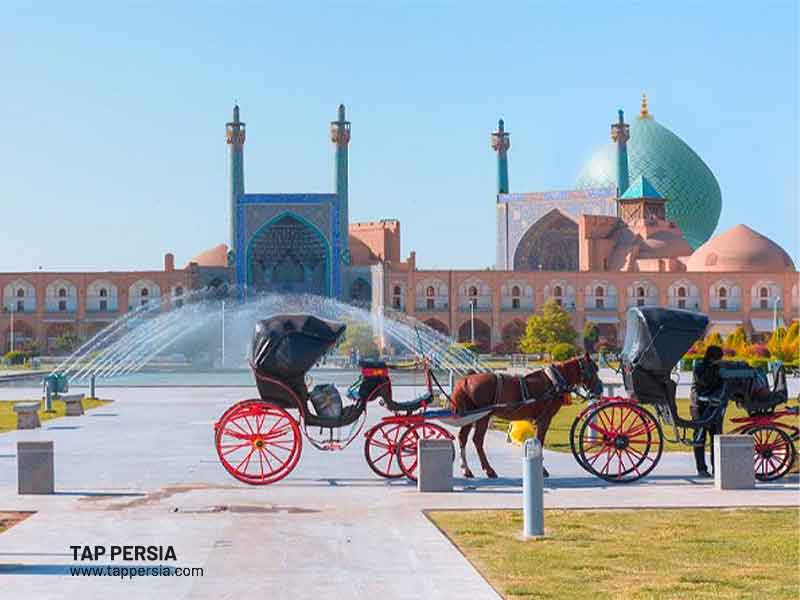
Isfahan’s main plaza, Naqsh-e Jahan Plaza, is situated in the center of the Naqsh-e Jahan historical complex. Along with 200 two-story stores, it has the Aali Qapu Palace, Shah Mosque, Sheikh Lotfollah Mosque, and Qeysarieh Gate. Before the city of Isfahan was chosen as the Safavid Empire’s capital, where government-related structures and the royal residences of the Agh Quyunlu and Timurid emperors were also located, there had been a Naqsh-e Jahan garden.
Shah Abbas I ruled in 1598, and during his reign, Naqsh-e-Jahan was built. The square was designed and constructed by Mohammad Reza and Ali Akbar Isfahani, two well-known architects. Additionally, Sheikh Baha’i was in charge of planning and directing the building of a few nearby structures. French tourist Jean Chardin dubbed Naqsh-e-Jahan Plaza the most beautiful plaza in the world.
Shah Abbas the Great and his successors for polo tournaments, military parades, illumination, and numerous performances utilized this area. It served as a space for shoppers and people to stroll. The oldest goalposts in the world, two sets of polo stone goalposts, are still present on the field’s sides.
2.Discover the Sheikh Lotfollah Mosque and its intricate tile work

A majestic mosque by the name of Sheikh Lotfollah Mosque may be found in Isfahan on the east side of Naqsh-e Jahan Square. Shah Abbas I had it constructed on his command with the intention of using it as a private royal mosque. The monarch intended to commemorate his father-in-law, a scientist, and gave it his name; it is without minarets. The Sheikh Lotfollah Mosque is connected to Ali Qapu Palace via a tunnel dug by the architect at the king’s request. This tunnel has long been a fascinating feature of the mosque.
The gorgeous arabesques that cover the dome’s surface stand out against its khaki background because of their turquoise tint. The complex patterns of peacock tails on the interior side of the dome, where light rays dance, make it even more appealing. This internal hall’s exquisite design is made even cuter by the 16 latticed windows that allow light to stream in from all sides. Visitors can spend hours admiring the mosque’s splendor and sense of reverence, and they can also spend hours discovering the beauty concealed in the calligraphy and interlacing pattern on the walls.
3.Marvel at the stunning interiors of the Imam Mosque
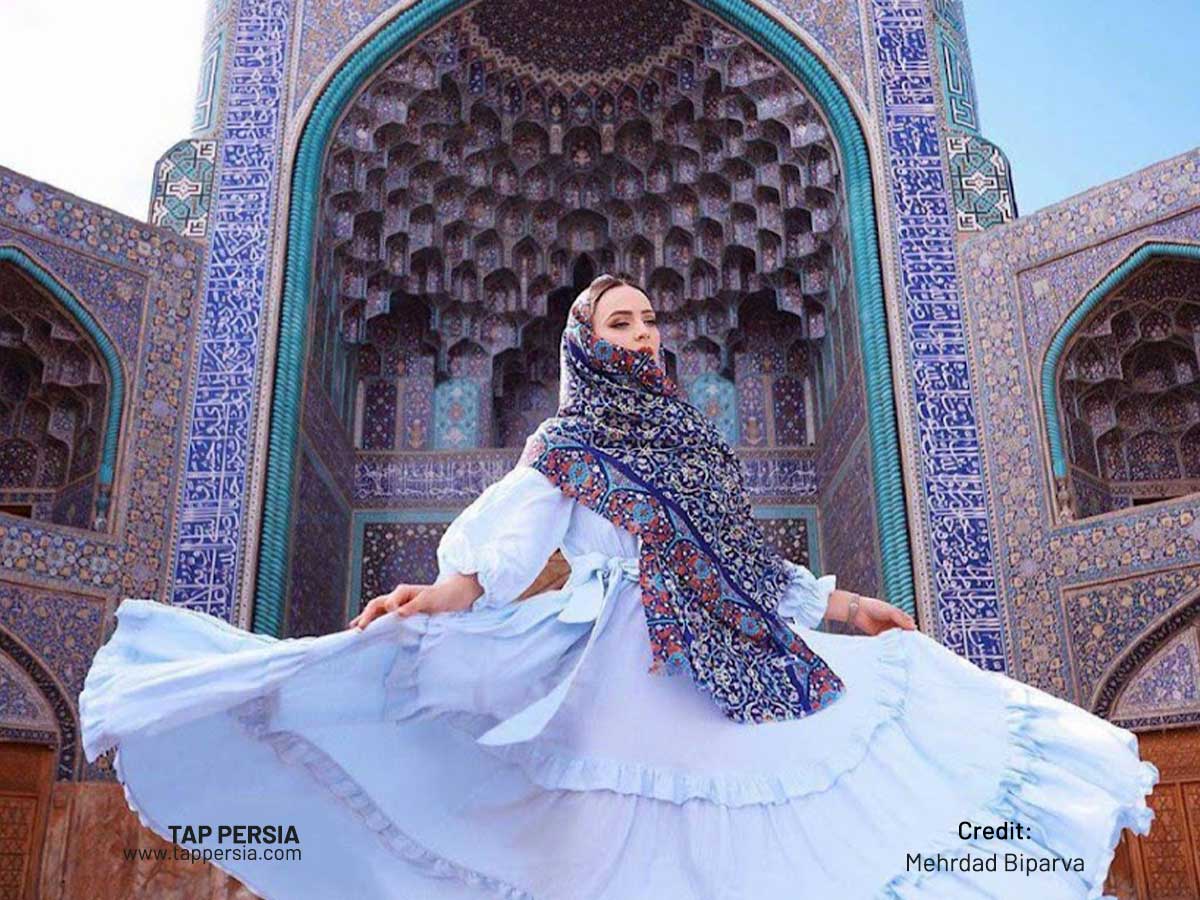
The Shah Mosque, often referred to as the Soltani Mosque and occasionally as the Imam Mosque, is a highly fascinating mosque that is situated in the northern section of the Grand Bazaar in Tehran, the capital city of the Islamic Republic of Iran. Although it was dedicated between 1810 and 1825, this mosque was erected during the Qajar period and adheres to Shia Islam. It also features an intriguing Qajar architectural style.
As soon as you reach Naqsh-e Jahan Square, your eyes are drawn to the Imam Mosque. The most significant Islamic structure in Iran is this enormous mosque. This masterpiece demonstrates the significance of religion in the Safavid period and was constructed by the monarch in an effort to make Naqsh-e Jahan Square the most significant area in the city. The region under the dome, which is utilized to magnify the call to prayer, is one of this mosque’s distinctive characteristics.
4.Climb to the top of the Ali Qapu Palace for a panoramic view
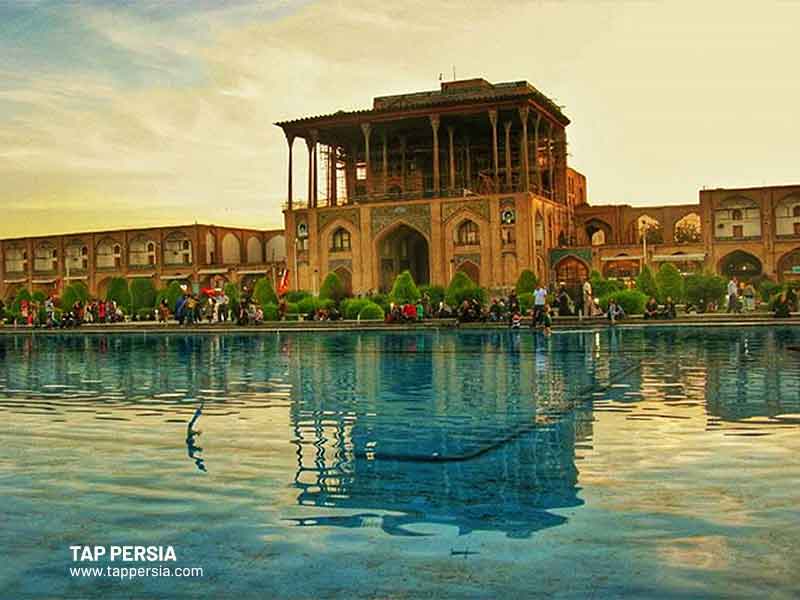
The Safavid dynasty’s monarchs maintained a formal home at this magnificent palace. The eleventh-century AH palace known as Ali Qapu Palace has six stories. The art and design are unique to each floor. The distinctive features of this house are the copper pool, the balcony on the third floor and the reception area with its fine moldings and paintings.
The frescoes, mirrors, and stucco on the six stories of this opulent castle are all overlaid. The most important aspect of the palace is its distinctive acoustic chamber, which is located on the sixth level. The area is specifically created for performing music, and the stucco on the walls and ceiling are formed in a way that will boost the sound.
5.Learn about the historic Jameh Mosque of Isfahan

The northwestern corner of the historic square is where you’ll find Jameh Mosque of Isfahan. An older settlement called Yavan sits close to where the first mosque was erected, and it is likely that this mosque was built over an earlier Islamic monument.
Isfahan adopted Islam as its official religion in 24 AH, leading to the construction of the city’s first mosque a smaller structure than the one already there in 156 AH but at the same site. Due to the city’s expansion and the resulting increase in the population, a larger mosque was erected over the first one in the third century.
The mosque was built utilizing bricks and a brick façade in the Razi Style of architecture.
The intricate tile work, superb molding design, and eye-catching inscriptions are evidence of the Isfahani artists’ labor of love and dedication in creating a magnificent mosque. This mosque is an excellent example of the historical, cultural, architectural, and aesthetic designs that have been created in the past.
Discover Isfahan’s Cultural Heritage
Isfahan has been selected as a model city for a city with a diversity of cultural heritage involvement programs because of its widespread popularity. Just a few instances are shown below:
6.Visit the historic Armenian Quarter and Vank Cathedral
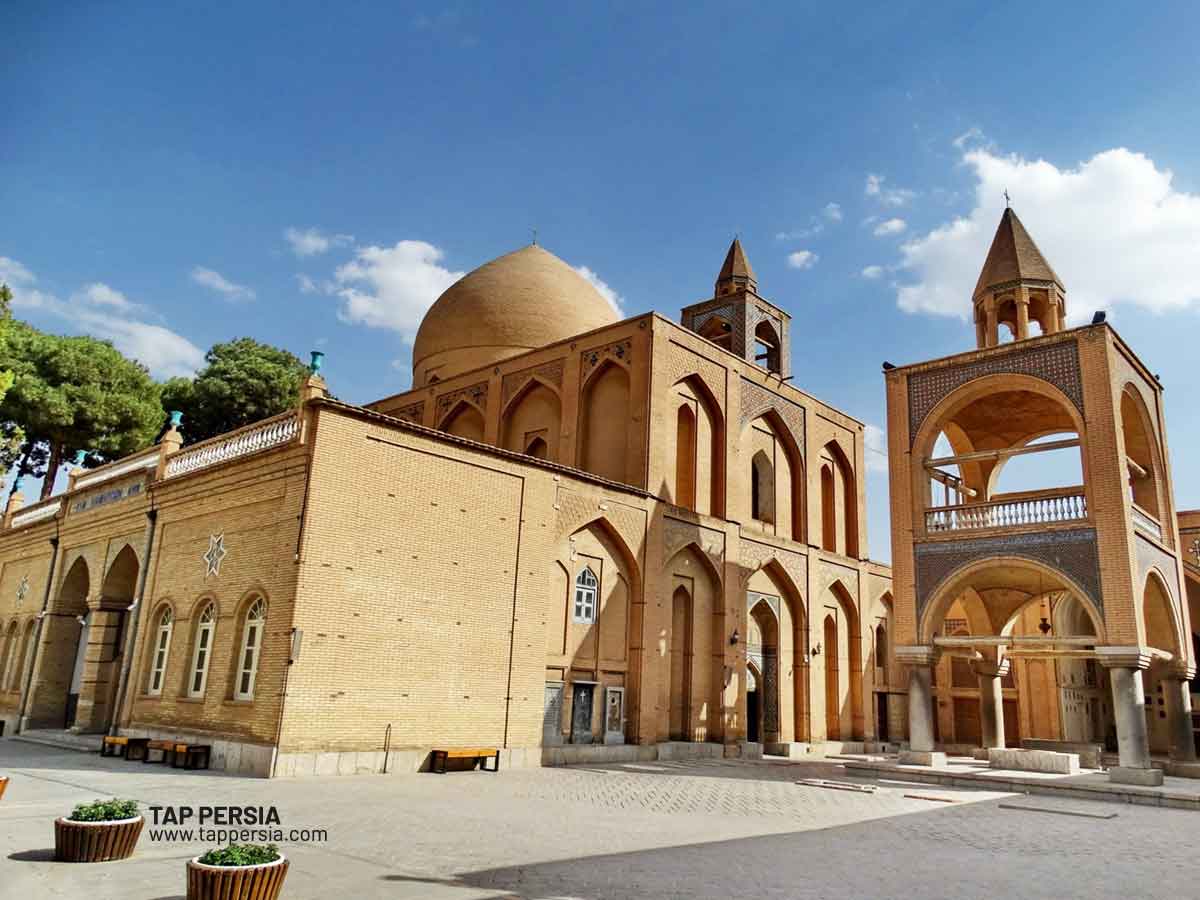
The numerous ancient stores, old homes, and historic structures that can be seen in Isfahan’s Jolfa district astound visitors. With its distinctive architectural style and lovely lanes and alleyways, Jolfa in Isfahan stands out and is distinct from any other neighborhood in Iran. As a result, you absolutely must go there when you’re in the city.
The cathedral of Vank is situated in the Jolfa district. The town still has 13 cathedrals, one of which is this church. The inside of this cathedral features Islamic tile work and Christian frescoes, fusing the Iranian and Italian architectural styles. Another memorial to the Armenian Genocide in Turkey may be found in the yard.
7.Discover the ancient ruins of Persepolis on a day trip from Isfahan
TAP Persia will take you on an unforgettable and lovely day excursion into the past, from the magnificent architecture of Isfahan to the fascinating historic ruins of Persepolis. One of the most important empires in ancient history, the Achaemenid Empire, had Persepolis as its capital. The city, which was founded in 518 BC, served as the hub of governmental and cultural activity for the empire.
According to various pieces of evidence, Persepolis was used for a variety of purposes, including temporary habitation and rest, a location for rituals and spring festivals, an observatory for astronomical research studies, a meeting place for the Council and Parliament, a significant place of worship for performing rituals, and a Ziggurat modeled after Mesopotamian Ziggurats.
Here, different-colored lime stones are set without the use of cement and solely with the aid of metal clamps. Achaemenian had employed many people in the building of this vast structure, and had paid them each a weekly payment. Alexander set fire to Persepolis in 321 BC, which resulted in the destruction of a sizable portion of the complex.
8.Learn about traditional Persian carpet weaving at a workshop
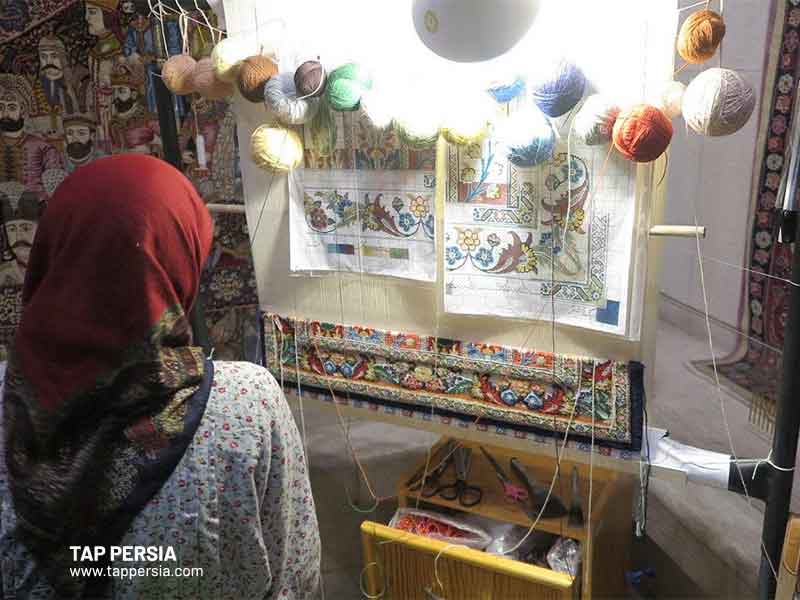
The silky kork wool used in Isfahan rugs (sometimes combined with silk accents or foundations) and extremely tight weave make them of exceptional quality. Perhaps the nicest and most expensive rugs in the entire world are made in this city. The most common pattern is an ivory-colored backdrop with a central medallion encircled by vines or flowers that are typically red, blue, or indigo.
Other typical design elements and motifs include Shah Abbasi themes, gardens, vases, Tree of Life patterns, and visually appealing artwork. The popular mosque of Shah Lutf Allah has served as a special model for many of the carpets made in this magnificent city, as have traditional themes and patterns, nature, poetry, and the works of great poets.
The rugs also draw inspiration from the city’s rich architectural heritage. Many looms, particularly vertical looms, are set up at the workshops in Isfahan, which make excellent workspaces for the pattern weavers who work under the supervision of carpet specialists and quality controllers. Highest-quality carpets with exacting patterns are produced at these workshops. If you love carpets, you may come with us to see some fantastic workshops in Isfahan.
9.Attend a traditional Persian calligraphy class
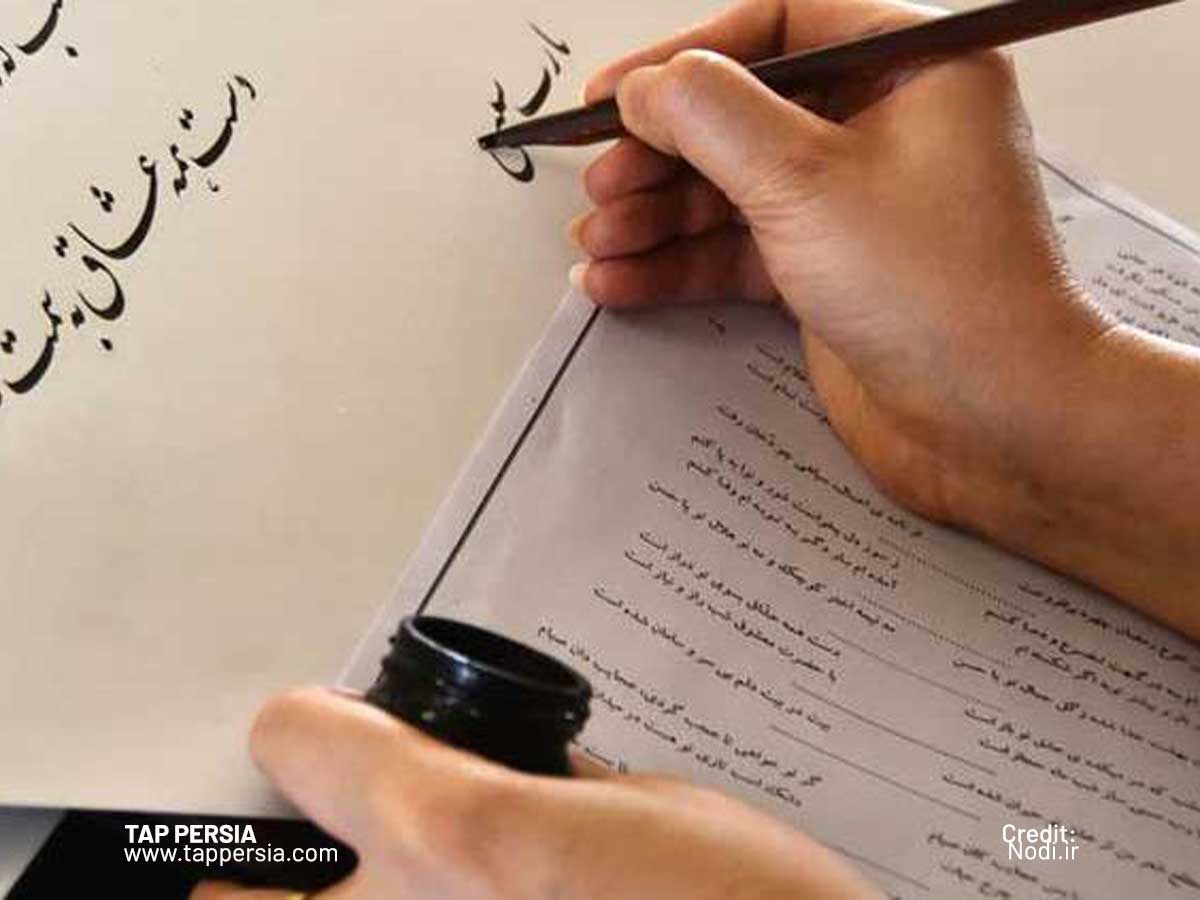
Calligraphy was utilized as a form of writing in Iran after Islam’s conquest. The help of Abu Bakr bin Saad Zangi in the city of Fars resulted in the production of several Qur’an manuscripts. The gilded covers of books first became adorned with patterns under the rule of the Ilkhanids due to the influence of Chinese art and the might of the Mongols. Throughout the Timurid dynasty, Iranian calligraphy and handwriting gained a lot of attention.
Those who are now interested in the calligraphic arts, particularly Persian calligraphy, can attend programs provided by the Iran Calligraphers Association or pursue private lessons from teachers who are qualified in this field.
10.Visit the historic Monar Jonban, a unique shaking minaret
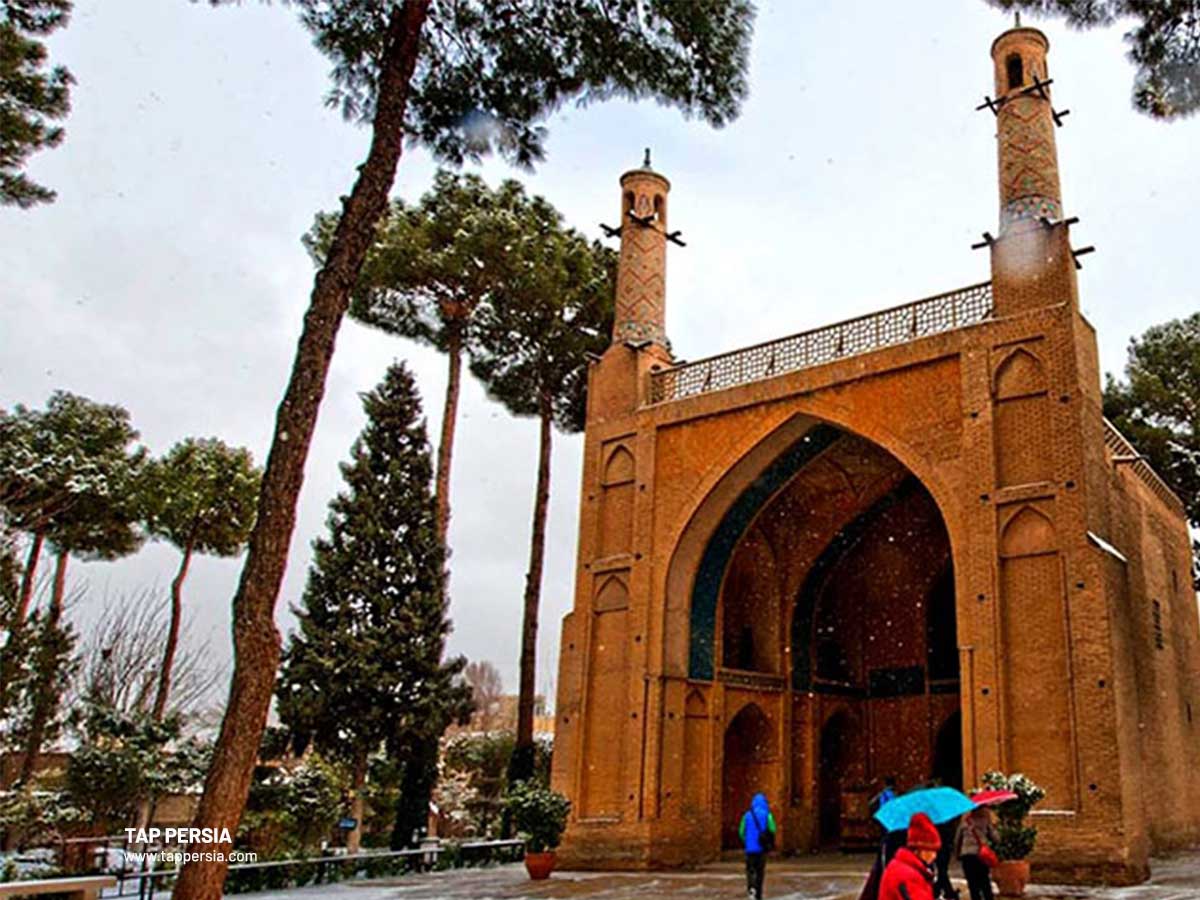
One of Isfahan’s most well-known historical sites is Monar Jonban, also known as Menar Jonboon, which is named after the Arabic word meaning shaking minarets. This mysterious area could contain more than just a piece of art. The High architectural understanding of its designers, which is evident in the design of the minarets, is what makes this edifice remarkable.
The other 17-meter-long minaret begins to shake at the same frequency as one of the minarets as it begins to shake violently. This area of the location is the most intriguing. For up to ten inches on either side, there is shaking. Very mild shaking is audible across the whole structure.
Additionally, if you want to feel the vibration more directly, place the bowl of water over the grave.
Previously, people could ascend the minaret’s stairs and shake it, but today only a designated guard is permitted to do so. From the base of the structure, visitors can only make out the trembling minarets. Just take caution not to miss the exact moment when these magnificent minarets begin to vibrate.
Explore the historic Armenian Cemetery and its unique gravestones.
This graveyard has a history that goes back more than 500 years, according to evidence and paperwork. Because of the life stories of individuals interred there and the contributions they made to the advancement of the civilization and cultural heritage of the area, this cemetery has evolved into one of the major tourist attractions in the southern part of Isfahan. By visiting this remarkable location, you may learn more about the Armenians who have resided in this historic cemetery.
Indulge in Isfahan’s Culinary Delights
One of the greatest cuisines you may try around the globe is Persian food. To find out the reality, just enquire about it from foreign tourists that visit Iran. Your senses will be delighted, and you’ll learn the fundamentals of Persian cooking as a result of this encounter. How to enjoy the delectable cuisine of Isfahan is as follows:
11.Sample the delicious local cuisine, including Chelo Kabab and Fesenjan

When it comes to food, Isfahan is certainly no slouch; in addition to the many delicacies that may be seen throughout Iran, the city also happens to be home to a number of cuisines. While you are in Isfahan, don’t forget to go on a tasting tour and try some of the city’s traditional dishes that have fresh and interesting flavors. Get to sample delicious local cuisine from Isfahan, including the well-known Biryani, Polo Mush Ghomri, and Kaleh Joosh. In Isfahan, you may sample other delectable foods, such as the wonderfully exquisite Chelo Kabab and Fesenjan, that are found in other parts of Iran.
12.Visit traditional tea houses and enjoy Persian tea

Iran is a nation where the majority of people consume tea, which offers a number of social benefits in addition to its health advantages. In Iran, tea is offered during family gatherings and significant occasions, such as the traditional wedding ceremony, which is the first official meeting of two families.
Teahouses have a significant role in the lives of Iranians and are more than just places to drink tea and pass the time. In Isfahan, you may visit old-fashioned tea rooms that offer a charming and inviting setting where you can sip great Persian tea and take in some lovely Iranian music.
13.Take a cooking class and learn to make Persian dishes
For excellent reasons, travelers from all over the world have been drawn to Iranian cuisine throughout the years. Throughout the long history of the magnificent Persia, even though there have been many different kings and monarchs, a variety of flavors and recipes have managed to retain their essence. Iranian cuisine’s foundations remain pure, nonetheless. During the afternoon, pay a visit to your host, a home-trained chef with more than ten years of experience leading culinary courses and tours for visitors in her cozy apartment in the city.
The finest gift from Isfahan is the art of Iranian cooking, which is sought after by foreign tourists who are fascinated by the complexity and mysteries of the Persian kitchen through firsthand interaction with people. You will learn the fundamentals of an Iranian kitchen while preparing some of the country’s most popular meals under the instruction of the chef and using printed recipes that you will take home from the lesson. You will additionally discover some delicious Isfahani food.
14.Explore the historic Qeysarieh Bazaar and its caravanserais
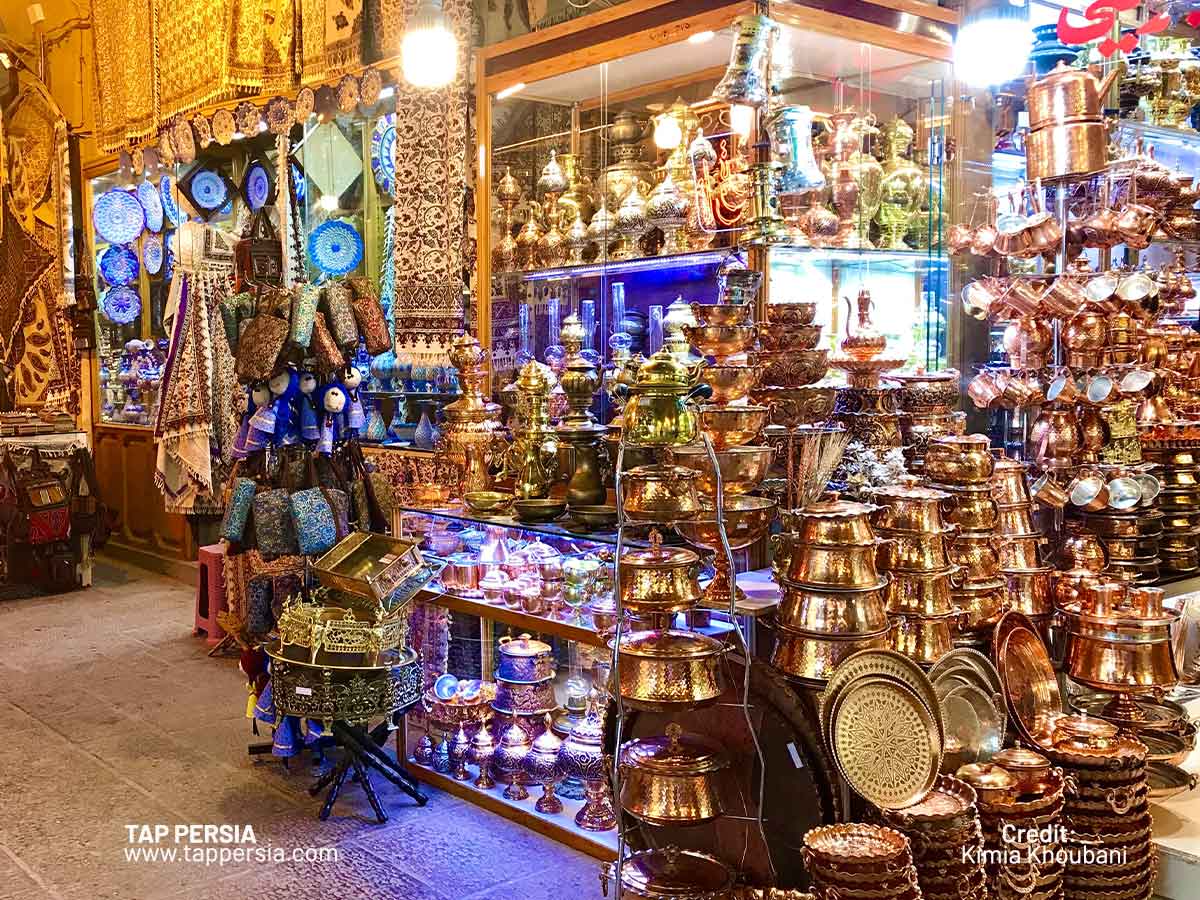
Iran’s Isfahan is home to the old Qeysarie Bazaar, also known as the Soltani Bazaar. Selling of carpets and kilims makes up the bulk of business at the Qeysarie market. In the Safavid era, the bazaar was one of the most important and opulent commerce hubs. It was built around 1620 and is located on the west side of Naqsh-e Jahan Square. It links the Atiq Square and the Seljukid district of Isfahan to the Naqsh-e Jahan Square. In addition, the bazaar offers delicious foods and snacks for you to try out.
The following are the components of the Qeysarie bazaar: Nimavard-e Golshan, Orian bazaar, Makhlas, Harounie, Samavarsazha (Samovarmakers) and Maqsudbeyk.
The No Mosque, Sadr School, Nimavar School, Zolfaghar Mosque, Jarchi Mosque, Khayyatha Mosque and Shishe Mosque are just a few of the ancient structures that can be seen in the Qeysarie Bazaar.
The bazaar’s principal entry is through the Qeysarie gate. A beautiful caravanserai with two levels and 150 rooms is located right here in the bazaar and is definitely worth a visit.
15.Experience Isfahan’s Vibrant Nightlife and Entertainment Scene
If you are aware of where you want to go and are familiar with the sites in this magnificent and historic Iranian city, Isfahan’s nightlife can be a really romantic and unforgettable experience for any visitor.
Attend a performance of traditional Persian music and dance
After the revolution, traditional Iranian dance and music were subject to political and religious constraints, but this did not cause ethnic groups to lose sight of their rich traditions in Iranian music and dance.
Among the most well-known Iranian music schools in cities of Iran, the city of Isfahan is quite popular, which grew throughout the Safavid era while serving as the country’s capital at the time. Due to the same circumstance, “Bayat of Isfahan” is the name of one of the most well-known musical groups in Iran.
Additionally, churches that are both Jewish and Christian frequently play Christian music throughout the province’s Christian communities. undefined Other musical genres in the province of Esfahan that are associated with the towns and cities close by Esfahan should also be included, such as Azerbaijani and Bakhtiyari music. Experience something unforgettable and unique by seeing the performance of magnificent traditional Persian music and dancing up close.
16.Enjoy the city’s thriving entertainment and nightlife scene
If you have an idea where to go and are familiar with the sights of this old and magnificent Iranian city, Isfahan’s nightlife may be a really wonderful and unforgettable experience for any visitor. Because of this, many tourists choose to spend their nights in Isfahan. After dark, the city takes on the appearance of a vast, dazzling museum, and you can walk to any corner of it to see amazing and outstanding works of art and monuments that have a place in the city’s history.
Therefore, instead of staying in your hotel room, we advise you to venture outside and experience Isfahan’s wonderful nights.
17.Attend a traditional Persian wedding ceremony
All weddings are happy occasions, but a Persian wedding is something altogether different. Persian weddings are an unforgettable occasion for the guests since they are full of ancient customs and traditions combined with modern elements. There are numerous steps in a Persian wedding that can be considered remarkably comparable to those in a Western wedding.
As an example, both bride and groom often dance together in their first dance, their family toast champagne while making well-wishing remarks, and the bride and groom participate in the garter and bouquet throw custom. After the wedding cake has been sliced and served, everyone participates in a lovely Persian ritual of dousing the newly married couple with rose petals while they dance. Get to visit these amazing weddings in Isfahan as well.
Embark on Exciting Day Trips and Outdoor Adventures
Isfahan is renowned for having beautiful natural surroundings. The following day tours are perfect for outdoor adventurers who wish to enjoy a day in the great outdoors:
18.Discover the beautiful village of Abyaneh, known for its red mud brick houses
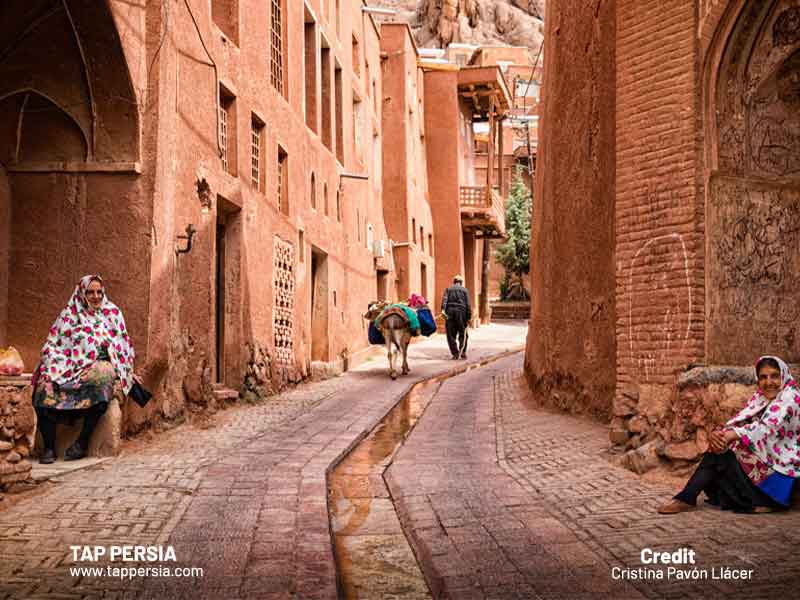
The village of Abyaneh is situated in the center of Natanz County in the province of Isfahan, at the base of Mount Karkas, the tallest peak in the area. A seasonal river flows through the picturesque valleys surrounding the town, which is located 2235 meters above sea level. Despite the fact that Abyaneh is a well-liked vacation spot for both domestic and foreign tourists throughout the year, the hamlet only has a relatively small number of year-round residents, and many of its citizens only come here for the summer.
The culture of the people who live in Abyaneh is one of its most intriguing features. Middle Persian, which was long extinct and was formerly the language of Sassanian Persia, is still spoken by certain elderly residents of the area. Another striking aspect of this place is how people dress. Most ladies wrap their shoulders with huge white scarves with red flowers printed or stitched on them. They also wear a unique pair of slacks and a vibrant dress. Women dress up with a velvet vest in the cold. The traditional attire for men also consists of a black vest and wide-leg pants. Their genuine style of attire usually makes them the primary topic of many images taken by visitors.
19.Take a scenic boat ride along the Zayanderud River
One of the captivating tourist sub-industries that is acquiring more and more followers daily is boating or rafting in the raging waves. In Isfahan, you may go rafting along the Zayandeh River, which is an exhilarating experience. Many people visiting this beautiful river consider it to be one of Iran’s most significant central rivers. Zayandehrood becomes more watery in the spring, thus it is preferable to visit during this time if you want to have an exciting experience. There are three accessible rafting courses in Zayandehrood, the shortest of which is three kilometers long and lasts for 30 minutes.
The Zayandehrood River has waves that are between level 2 and level 3, making it appropriate for adventurous travelers who are in good physical and mental health and are between the ages of 12 and 50. Of course, the Zaman Khan Bridge segment is hazardous and should not be used for boats.
20.Find out more about Hasht Behesht’s stunning gardens and palace
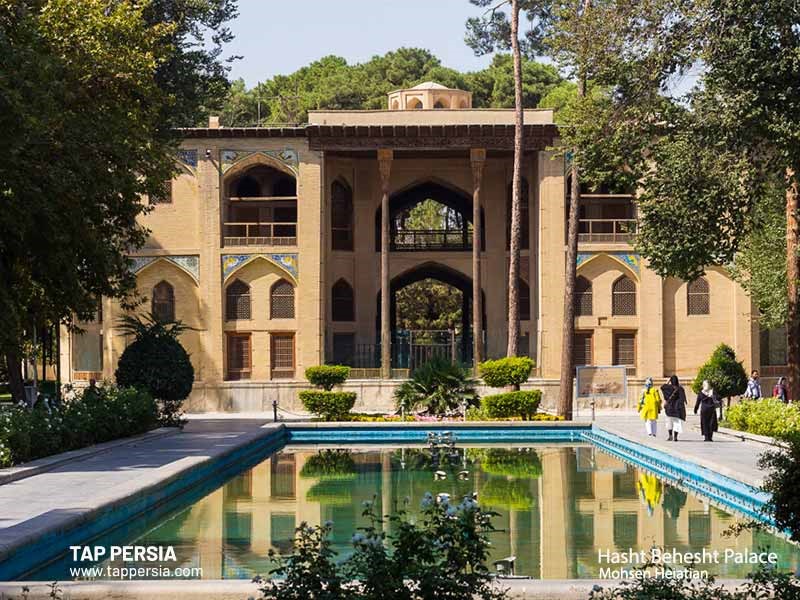
Isfahan is home to the magnificent Hasht Behesht palace, which was built in 1660 and used as a residence. The wondrous Hasht Behesht is situated directly in the center of a beautiful garden. A number of locations throughout the palace display the octagonal shape of the Hasht Behesht building.
It is higher above the ground level to build a two-story palace.
Fascia architecture and artwork may be seen on the first floor’s walls. On the second story, there are various rooms, windows, and doors with incredible cachet decorations. The marble pool which is known as the Pearl Pool is located in the middle of the passageway.
The eight wives of King Shah Abbas resided in the Hasht Behesht palace. The first level used to be home to four of them, while the second story was home to the other four. There is no question that the structure’s stunning architecture and distinctive design will captivate you.
21.Take a bicycle tour of Isfahan’s historic sites

Isfahan, one of the most beautiful ancient towns in the world and the greatest bike-friendly city in Iran, is best explored on a guided bike tour or on a rented bike. You will pass through a number of ancient bridges along the journey, including Khaju and Si-o-Se Pol. You may explore Isfahan in a unique way by biking alongside the Zayandeh Roud River, which is off the usual route. The alternate choice is to go riding in an Isfahan park that is wooded. Because it is level and secure, Nazhvan Forest Park is great for riding.
22.The Isfahan Bazaar Offers Traditional Handicrafts and Souvenirs for Purchase
To be completely honest, Isfahan is regarded as a haven for artists and artisans. There is an unending list of the most mouthwatering treats and exquisite handicrafts that you may purchase in Isfahan. You have a lot of options, but if you have to pick only a few, you can become really perplexed. It might be enjoyable to go shopping in Isfahan.
23.Shop for Traditional Handicrafts and Souvenirs
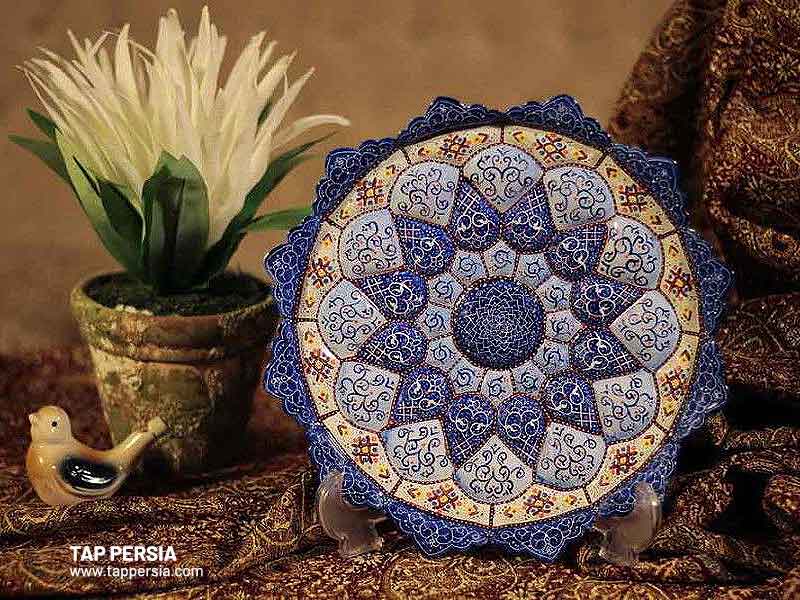
Other Iranian cities, such as Isfahan, have long been renowned for their art and culture. Souvenirs made of Isfahan’s handicrafts are among the nicest things to bring home. Isfahan was furthermore recognized as the 2015 World Craft City. Isfahan is the destination of choice for most travelers looking to buy Persian handicrafts because of this. Pottery, copper, wood, brass, and silverware are just a few of the Isfahani city’s many handicrafts. The handicrafts that Isfahan is most well-known for, though, include Qalam Kari and carpet weaving(Isfahan souvenirs). In order to give those you care about a sentimental and lovely gift, be sure to get an Isfahan memento.
24.Explore Isfahan’s Parks and Gardens
Isfahan ranks well among Iran’s metropolises in terms of the amount of urban green space it possesses, with 37 million square meters. The city is home to a range of parks that are all lively, bright, and refreshing in their own unique ways. Here are some of Isfahan’s well-known parks and gardens:
Take a stroll along the picturesque Zayanderud River and its bridges

On the Zayanderud River in Isfahan, the Khaju Bridge, one of Iran’s finest bridges in terms of architecture, is built. We advise you to visit the Khaju Bridge if you’d like to see Isfahan’s finest examples of architecture. Zayanderud has a lot of bridges that connect its two sides. The Khaju Bridge, however, is unique in more ways than one. The bridge’s architectural characteristics and use of tile ornamentation made it more well-known than other bridges across the Zayanderud River and were credited with making it one of the most stunning structures in the world at the time.
One of the most pleasurable things that both visitors and residents prefer to include in their schedule is walking across this bridge, particularly during the evening and early at night. Many people come onto the bridge because of its beauty as well as its mysteries and surprises.
25.Wander through the scenic Chehel Sotoun Palace and its beautiful gardens
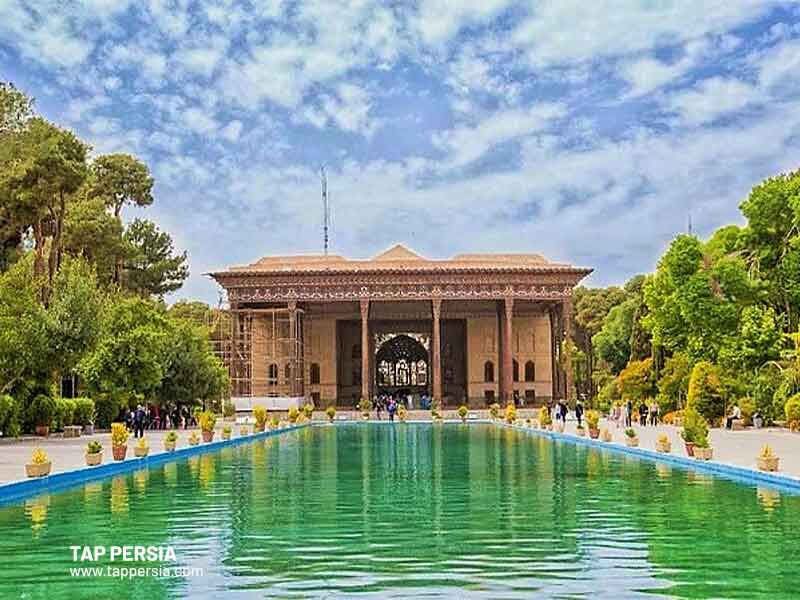
Visit the Chehel Sotoun, also known as “Forty Columns,” a magnificent palace from the 17th century that is situated in Isfahan, a historic city, and is nestled within lush gardens. This architectural marvel, which was constructed by Shah Abbas II as a pavilion for the amusement and receptions of his court, is famed for its intricate paintings, magnificent tile work, and unusual wooden columns.
If you decide to see Chehel Sotoun, stroll through the serene gardens, take in the breathtaking murals that portray historical events, and be amazed by the palace’s distinctive design, which gives the appearance of forty columns whenever the wooden columns are mirrored in the sizable lake situated in front of the pavilion.
26.Enjoy a picnic in the lush Naghsh-e Jahan Park
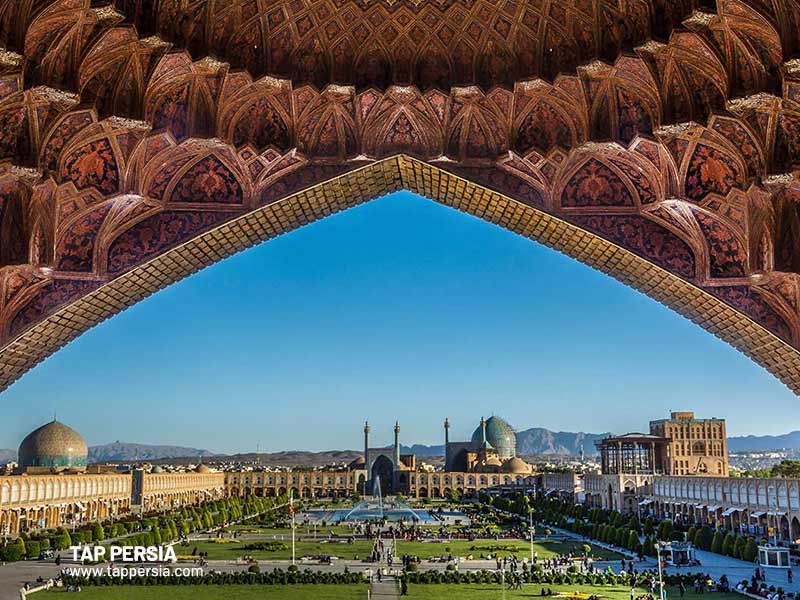
Naqsh-e Jahan, a well-known cultural icon, is surrounded by significant historical sites from the vast Persian Empire and is bordered by lush open space. The magnificent plaza is a representation of the awe of the Safavid era when Isfahan was made the capital of Persia. The builders of Naqsh-e Jahan had grand plans for the structure, including using it for national celebrations and elevating the new capital. It was once used for parties, public executions, polo tournaments, and for gathering armies.
The area today serves as a bridge between the city’s prosperous past and present. In the square’s central fountain, visitors can make a wish or ride around in a horse-drawn carriage. Just before dusk is the ideal time to visit, as it is for many of Iran’s ancient monuments. It becomes the ideal spot to unwind when the region is tranquil, the air is pleasant, and there is lush grass around.
27.Visit the beautiful Shahrestan Bridge and its park

Shahrestan Bridge is the oldest span across the Zayandehrud River among all the bridges in Isfahan. Shahrestan Bridge was created adjacent to the historic Ashraf Hill and dates back to the Sasanid Period. A man-made lake has been created around the bridge to prevent future damage, and the Zayandeh Rud has lately been rerouted approximately one hundred meters away from the bridge and toward the south. A camera should be in your possession if you want to capture some stunning images of this magnificent, historic bridge.
28.Visit the historic Khaju Bridge and its tea houses

One of Iran’s most renowned, historic, and beautiful bridges is the Khaju Bridge in Isfahan. On the remains of an earlier bridge, Shah Abbas II of the Persian Safavid dynasty erected this bridge in the year 1650 AC. It connects the Khaju neighborhood on the north bank with the Zoroastrian neighborhood across the Zayandeh River by acting as both a dam and a bridge (or a weir).
The bridge was built to serve many purposes; in addition to being a means of transit, it also functions as a weir. Its principal use was as a structure and gathering location for the general public. Originally used as a teahouse, this building was beautifully embellished with elegant tile work and paintings. Today, you may visit incredible tea cafes in the neighborhood and have exquisite Persian tea while taking in the scenery.
Shah Abbas might have formerly sat in a pavilion in the middle of the building to take in the scenery. On both the downstream and upstream sides of the bridge, octagonal pavilions in the middle offer vantage points for breathtaking views. The lower section of the bridge is accessible to pedestrians and is still a well-liked spot for lounging in the shade.
29.Uncover the Spiritual and Religious Sites of Isfahan
In Isfahan, there are several spiritual and religious places that, when visited, will leave you with a sense of serenity, divinity, and calm. For acquiring spiritual advantages, this is fantastic. The following are a few of Isfahan’s religious locations:
30.Learn about the spiritual history of Menar Jonban and Monar Jonban
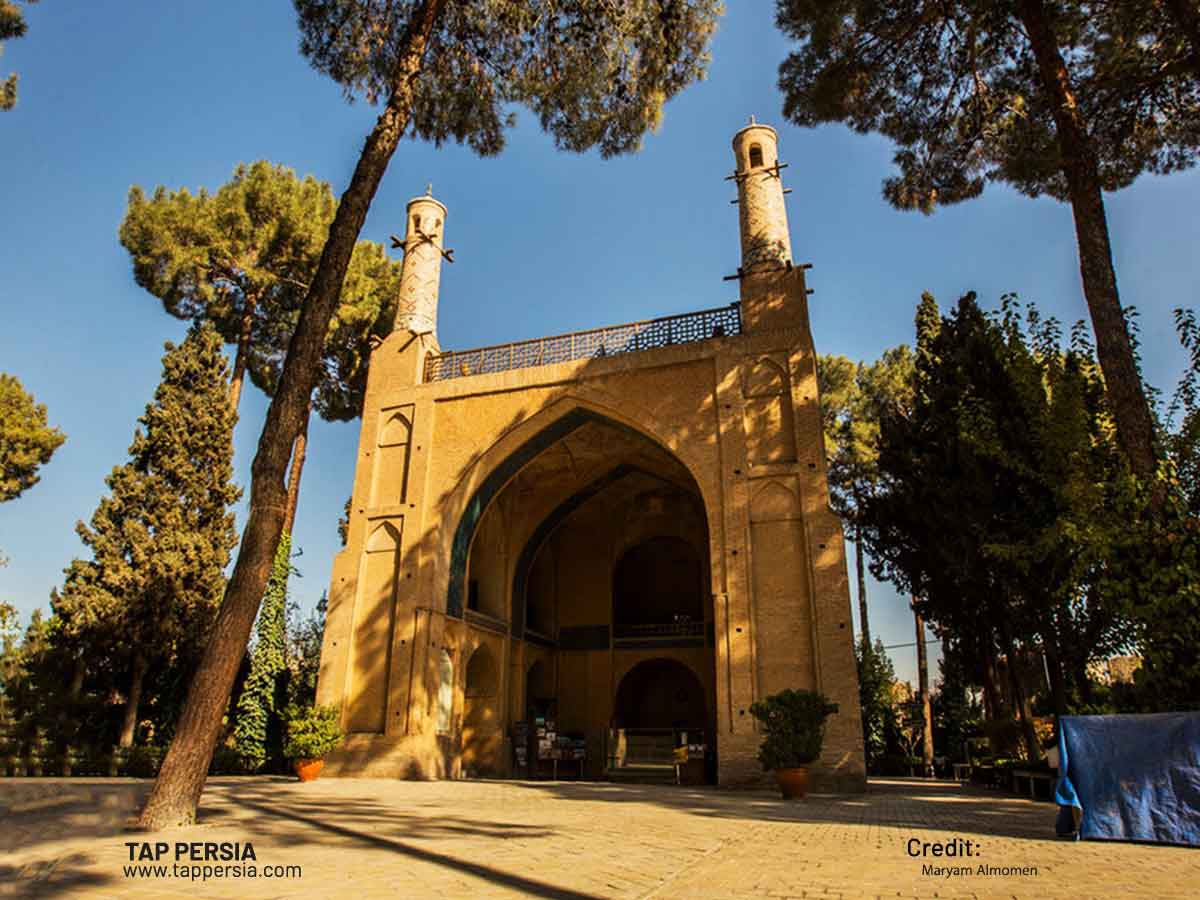
Menar-Jonban, commonly referred to as the “shaking minarets,” is one of Isfahan, Iran’s most distinctive and interesting architectural wonders, as we have already said. The monument is a mausoleum from the 14th century that is situated in the western region of the city and contains the burial of the Sufi saint Amu Abdollah Soqla. Both of the minarets that rise on both sides of the building, Menar-Jonban’s most notable features. These minarets are linked through an arched bridge, and as a result, when one shakes, the other one shakes as well.
The architectural marvel Menar-Jonban is significant for religious and spiritual reasons. Many people travel to Amu Abdollah Soqla’s grave in search of blessings since it is thought to have therapeutic properties. So, if you’re curious and want to take risks, why not check out this incredible building.
Discover the spiritual significance of Sheikh Lotfollah Mosque’s architecture
In a mosque, praying is among the most significant activity. The outward parts of it include ablution, facing the Ka’ba in Mecca, and establishing a gathering. Muslims can advance spiritually via honest prayer. This is seen in the Sheikh Lotfollah Mosque’s architecture. We see the mosque’s architecture was built with sincerity as we enter.
Many mosques appear to be in azure and blue colors at first look. Any worshipper or visitor to the Sheikh Lotfollah Mosque should have a sense of psychological serenity and spiritual upliftment as a result of the architect’s use of colors and designs to represent the peace and dignity of the location.





